Preston mum's miracle birth after six c-sections
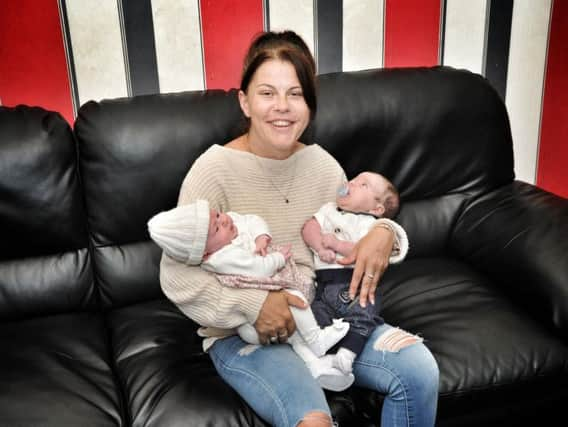

With seven children and one granddaughter, Claire Cushnaghan feels the luckiest woman on earth.
When she was pregnant with her fourth child, she was told having any more children would cause complications because she had too many caesareans.
Advertisement
Hide AdAdvertisement
Hide AdBut thanks to the tremendous support at the Sharoe Green unit at Royal Preston Hospital, the 35-year-old has successfully delivered three more children.
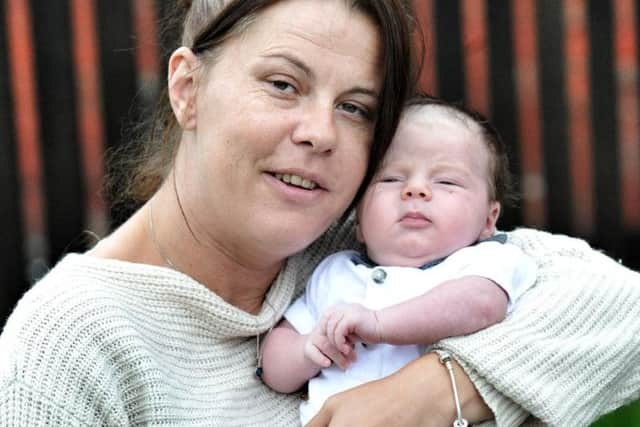

Even more extraordinarily, despite being told having a caesarean meant she was never able to have a vaginal birth, the team was able to give Claire her wish to have a natural birth.
Charlie was born on August 8 at 9.21am, weighing 8lb - two days before her first grandchild was born.
Claire, of Ribbleton, says: “I had my first child, Nathan, 18 years ago, when I was 17. He got stuck at 4cm and so I had to have a caesarean after being in labour 15-and-a-half hours.
Advertisement
Hide AdAdvertisement
Hide Ad“So for my second one, Nicole, now 17, the doctor said because I had a caesarean the first time, I could no longer have a vaginal birth.
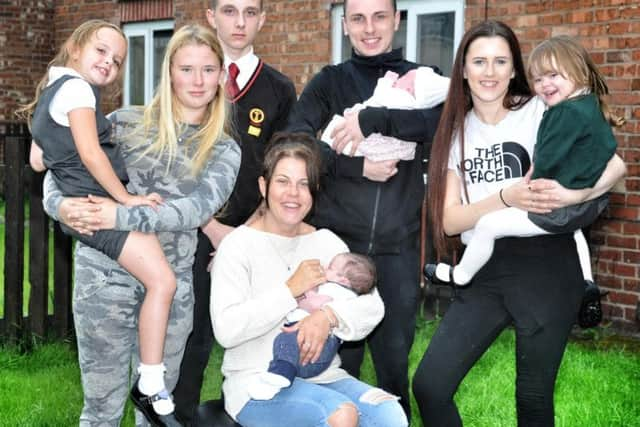

“A year later I got pregnant and had another c-section with Megan, 16.
“On my fourth pregnancy, with David, now 14, I was told that would have to be my limit as the risk was too dangerous to have anymore.
“I was only 21 and agreed to have my tubes tied while having the caesarean. But I went into early labour at 34 weeks and had to have an emergency c-section, so they never did my tubes.
Advertisement
Hide AdAdvertisement
Hide Ad“I made a later appointment to have it done but with having very young children I just never ended up going for it.
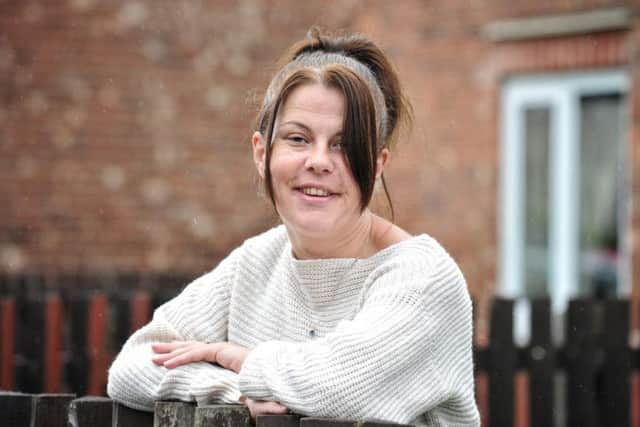

“I used the implant as contraception and just carried on with life.
“I met my new partner a couple of years later. After about six years together we both longed for a child together and decided between us that we would take the chance. We did a lot of research and found that although there would be complications at birth, there was no great risk to our baby.
“I had a pretty stressful pregnancy due to being told our child had so-called complications that would be detrimental to her life.
Advertisement
Hide AdAdvertisement
Hide Ad“But it turned out my baby, who we named Faith, now six, was healthy and doctors had got it wrong.
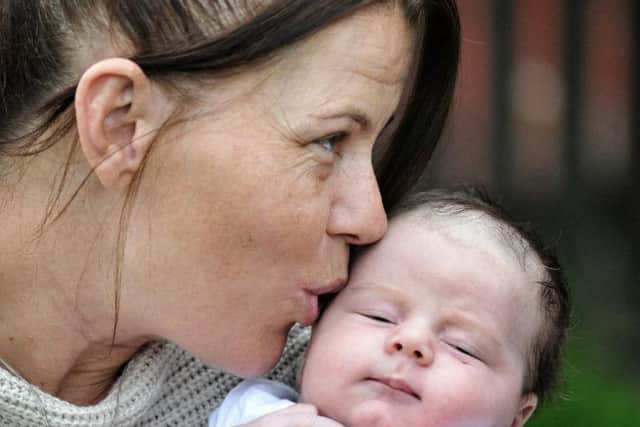

“That was my easiest section I had. I recovered a lot quicker than I ever had with the others, so after a couple of more years we wanted to give her a sibling. “I figured that the doctors aren’t always right and to take the chance again.
“Again, this was an easy pregnancy and birth with no complications other than my daughter, Amelia (Millie), now three, being diagnosed with Down Syndrome at two weeks old.
“I picked that up before the doctors did.”
Wishing to expand her brood, Claire and her then partner decided to have another baby - and after researching vaginal births after caesareans (VBAC) she was adamant she should be allowed the experience.
Advertisement
Hide AdAdvertisement
Hide AdClaire adds: “When I got pregnant this time around, I started researching it more.
“I was more informed and I was determined to deliver naturally. I did not budge and doctors supported me.


“Other women had given birth vaginally.
“I put my foot down and said I wanted to give birth naturally.
“Doctors gave me the risks and in fact, there were more risks with having a seventh c-section, rather than giving birth naturally.
Advertisement
Hide AdAdvertisement
Hide Ad“I was in labour for four hours. I had uterine hyperstimulation labour where my contractions were on top of each other. There was no break, so Charlie’s heartbeat dropped and I was only 6cm. That scared me. This had nothing to do with my previous c-sections, doctors could not explain why I had this type of birth.
“I was taken to theatre but by that time I was fully dilated and I was able to give birth. Forceps were used to get him out quicker.
“It was a scary time but I have finally been able to give birth vaginally to one of my children.
“And it is all down to the team at Sharoe Green unit. They were incredibly supportive and without their help, I could never have achieved my dream of a vaginal birth.”
Advertisement
Hide AdAdvertisement
Hide AdTo make Claire’s family complete, her eldest, Nathan, welcomed his first child, Tilly Mae, two days before his baby brother was born.
She adds: “I am delighted to have a granddaughter. I have always wanted a big family.
“My mum was one of 13 and my dad had 11 siblings.”
Claire is making the most of her time with her family until she returns back to work as a home carer in November.
She adds: “I work every other weekend and during the week whilst the older children are at school.
Advertisement
Hide AdAdvertisement
Hide Ad“My family and the children’s dads help out too so I have plenty of support around me.”
The single mum is now hoping to use her experiences to provide support and encouragement to other women who have had caesareans and are worried about the risks of a vaginal birth.
She says: “I think what doctors say is not gospel for everybody because every person is different.
“I want to give hope to other women who are told they can’t have a VBAC. They should not have their choices taken away. I am proof of that.”
Factfile
How many c-sections are deemed safe/unsafe?
Advertisement
Hide AdAdvertisement
Hide AdEach repeat C-section is generally more complicated than the last.
Studies show that the risks increase after a third caesarean delivery, and vaginal deliveries aren’t recommended after three caesareans.
The more caesareans you have, the longer each operation will take, and the higher your risk of complications becomes.
The include: scar tissue on the uterus and nearby organs; bladder and bowel injuries; heavy bleeding and problems with the placenta.
Can you have a vaginal birth after a caesarean (VBAC)?
Advertisement
Hide AdAdvertisement
Hide AdIf you’ve had a caesarean in the past, it is still possible to give birth vaginally.
Vaginal birth after a previous caesarean (VBAC) is a common and safe way to have a baby for many women. A caesarean should only be done for a good reason because, like any surgery, it carries risks.
Doctors may recommend that you have your baby by caesarean, if certain pregnancy complications in this pregnancy or a previous pregnancy make a vaginal birth too risky for you or your baby.
If you’ve given birth by caesarean in the past, talk to your midwife or obstetrician about the best way for you to have your next baby.
Advertisement
Hide AdAdvertisement
Hide AdIt is possible to go for a VBAC after two or more c-sections.
The likelihood of women having a vaginal birth after more than one previous caesarean section is about the same as that in women who have had only one previous section, and there is little difference in the risk of uterine rupture.
Your weight, age, medical history, fertility history, and reasons for any previous caesareans are all factors. Also, how long you leave between having your babies (waiting at least two years is best), as well as personal choice, needs to be taken into consideration.
For more information visit http://www.nct.org.uk/birth/vaginal-birth-after-caesarean-vbac